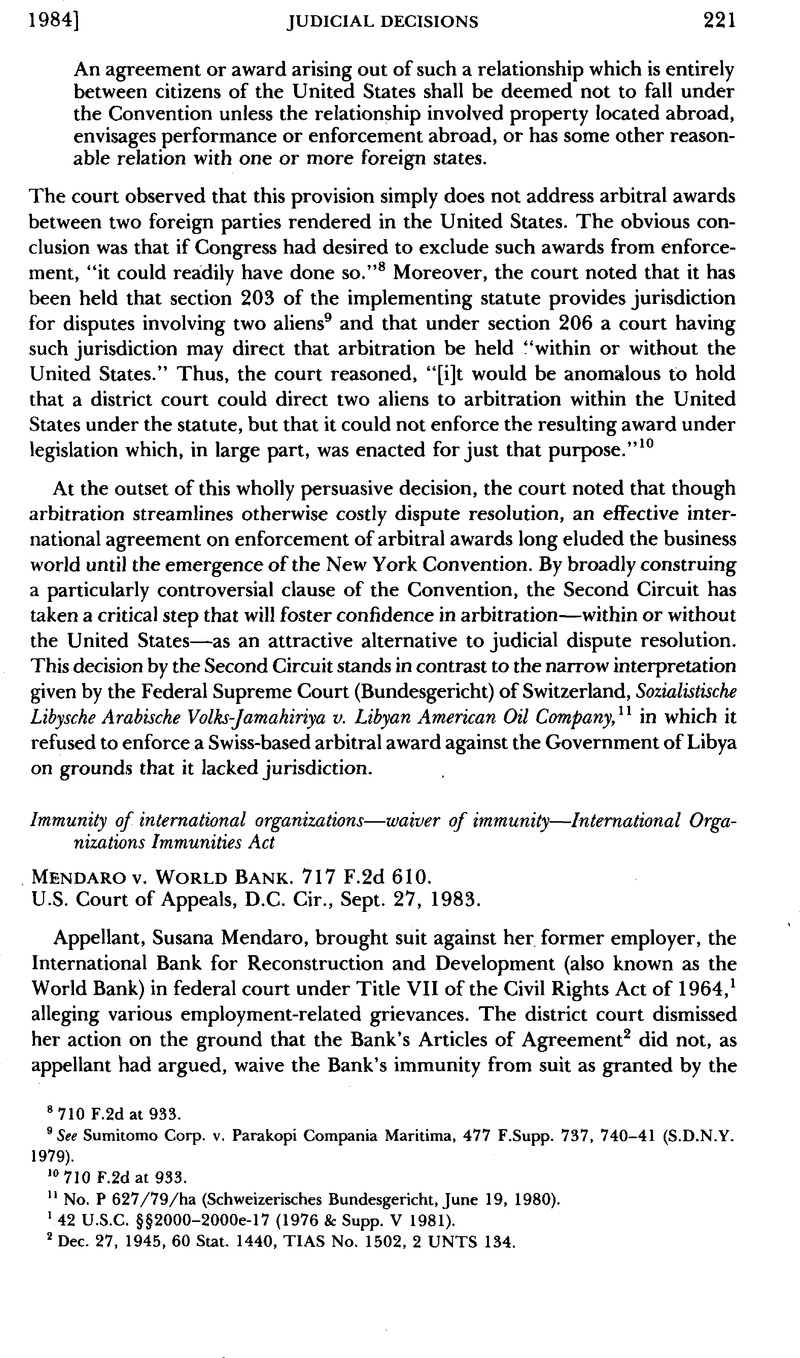No CrossRef data available.
Article contents
Mendaro v. World Bank. 717 F.2d 610
Published online by Cambridge University Press: 27 February 2017
Abstract

- Type
- Judicial Decisions
- Information
- Copyright
- Copyright © American Society of International Law 1984
References
1 42 U.S.C. §§2000–2000e-17 (1976 & Supp. V 1981).
2 Dec. 27, 1945, 60 Stat. 1440, TIAS No. 1502, 2 UNTS 134.
3 22 U.S.C. §§288–288i (1982).
4 Id. §288a(b).
5 Articles of Agreement, supra note 2, Art. VII, §3, 60 Stat. 1457–58, 2 UNTS 180.
6 717 F.2d 610, 615.
7 Articles of Agreement, supra note 2, Art. VII, §1, 60 Stat. 1457, 2 UNTS 180.
8 Id., Art. I(i)-(iii), 60 Stat. 1440, 2 UNTS at 134.
9 628 F.2d 27 (D.C. Cir. 1980).
10 717 F.2d at 616 (quoting Broadbent, 628 F.2d at 34–35) (footnotes omitted; emphasis in original).
11 See 628 F.2d at 29–32.
12 28 U.S.C. §§1330, 1602–1611 (1976).
13 The International Organizations Immunities Act, enacted in 1945, granted certain international organizations “the same immunity from suit and every form of judicial process as is enjoyed by foreign governments.” 22 U.S.C. §288a(b) (1982). In 1945, foreign governments were absolutely immune from suit under U.S. Law. The immunity of foreign governments, however, was severely limited by the passage of the Foreign Sovereign Immunities Act, by which the United States formally adopted the restrictive theory of sovereign immunity.


